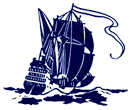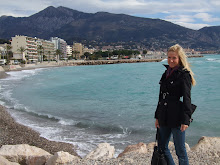I wasn't entirely sure what to expect of Groote Eylandt, but was certain it was remote. Each time I mentioned the name of the island to an Australian, I received a very clueless look in response. And the 18-seater hopper plane I took carried 5 other passengers forthe 2 hour flight- most of which appeared to be researchers. Upon arrival, I was picked up by Keith and Navel- two rangers from the Anindilyakwa Land Council- and taken to a small market to gather grocieries before making the hour journey out to the villiage of Umbakumba. This is where Keith and his family live and where I would be staying for the week; a beautiful aboriginal community on the coast with red dirt roads and colorful homes.
At night, I joined the men as they spear fished by moonlight at low tide. Eager for me to try their favorite treats, we caught sea urchin after sea urchin- cracking them open right there on the shore and sucking the meat out raw. A bit gritty with sand, they weren't bad, although I certainly preferred the mud crab and small fish we steamed later.
During the day, I joined the rangers on their beach patrols. We'd drive the coastline in search for nets, stopping to collect and record each one. They use a booklet provided to them by the Carpentaria Ghost Nets Program to identify, when possible, the origin of each net. We'd measure the twine size and mesh size, count the strands, and identify the color as we paged through pages of foreign nets. Most of the nets we collected were trawl or gill nets from Indonesia, Thailand, and Taiwan. I should note that none of the nets that we were able to identify were from Australian fisheries.
Keith, and another ranger, Philip, also helped me out on a general rubbish clean up of about 2o0 meters of beach. Between laudry baskets, garbage bins, large plastic floats, lighters and light bulbs, the three of us collected nearly 1000 items with a total weight of 31 kilograms (just about 70 pounds). Over ten percent of the items collected were shoes. And I found the most interesting thing I've found so far on my cleanups: a pretty weathered shot gun.
Next stop: The Cobourg Peninsula in Northern Territory, Australia
(That's about one shoe every 6 feet)






No comments:
Post a Comment